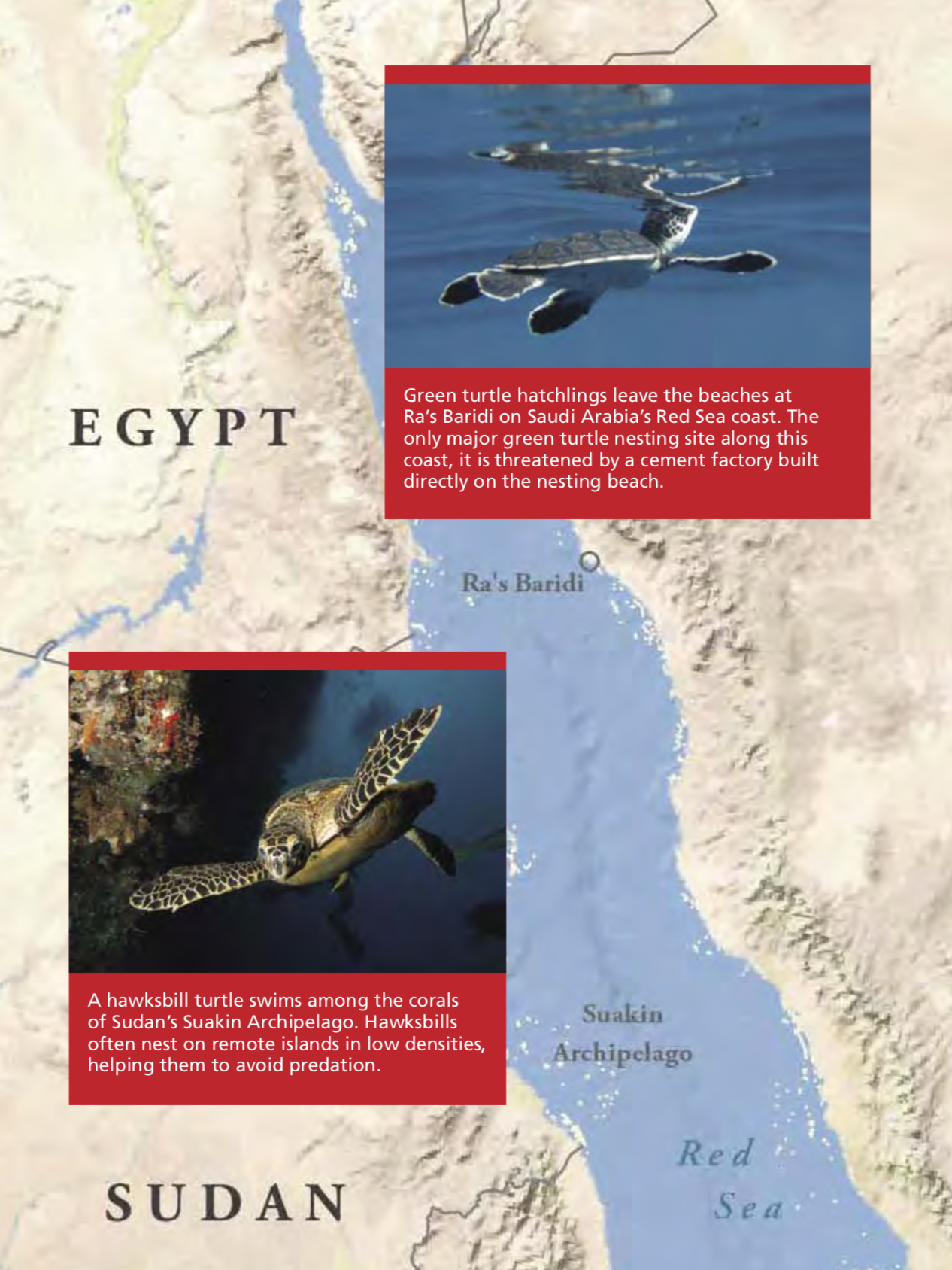Sea Turtles in the Middle East
By Nicolas Pilcher and Jeff Miller
Among the Middle East’s many fascinating inhabitants are the thousands of sea turtles that roam the region’s waters, feeding on a plethora of marine delicacies and arriving each year, with unfailing regularity, to nest on the region’s shores. The Arabian Peninsula dominates the region: its beaches are washed by the Red Sea to the west; the Gulf of Aden and the Arabian Seas to the south and east, respectively; and the Arabian (Persian) Gulf in the northeast. Each of these marine bodies hosts a kaleidoscope of unique fauna—including globally important sea turtle populations—and each population has its own conservation challenges.
Hawksbill turtles inhabit coral reefs, where they feed on sponges and other invertebrates. In the Middle East, they nest predominantly along the coasts of Iran and Qatar—where they are believed to number in the hundreds—and on the offshore islands of Oman, Saudi Arabia, and the United Arab Emirates. Smaller numbers nest in Egypt, Eritrea, Sudan, and Yemen.
Herbivorous green turtles forage in shallow water seagrass pastures, which are found in restricted tracts along the Red Sea coast, along the southern coast of Oman, and throughout the southeast regions of the Arabian Gulf. These foraging zones are among the most important for the species in the northwest Indian Ocean, supporting nesting populations that number in the thousands. In Oman alone, more than 4,000 green turtles nest each year. On the Saudi Arabian islands of Jana and Karan, some 1,000 come ashore to lay eggs. Hundreds more nest along the Red Sea and Gulf of Aden coasts of Saudi Arabia and Yemen. Small populations of olive Ridleys also nest in Eritrea and Oman, and a number of leatherback turtles can be found foraging in the Red Sea and along the southern Arabian Gulf coasts.
The true jewel in the crown, however, is the loggerhead turtle population nesting at Masirah Island—an 85-kilometer (52.8-mile) stretch of land 10 kilometers (6.2 miles) off the southern coast of Oman. There, at this bastion of the Middle Eastern sea turtle empire, an estimated 30,000 loggerhead nests are laid each season. Loggerheads nest in smaller numbers in Yemen and possibly in Egypt, although no other major nesting aggregations are known.
For now, because direct exploitation has been historically low and because many Middle Eastern countries have fisheries policies that indirectly benefit turtles, the region continues to be a stronghold for the various turtle species. Their populations show little sign of decline, despite the increased human-induced pressures since the 20th-century discovery of petroleum reserves. Perhaps the greatest question for Middle Eastern turtles now is how and if they will survive the expanding footprint of continual human population growth and the accompanying industrial and commercial development that is already significantly polluting and diminishing the turtles’ habitats.
This article originally appeared in SWOT Report, vol. 2 (2007). Click here to download the entire article as a PDF.



